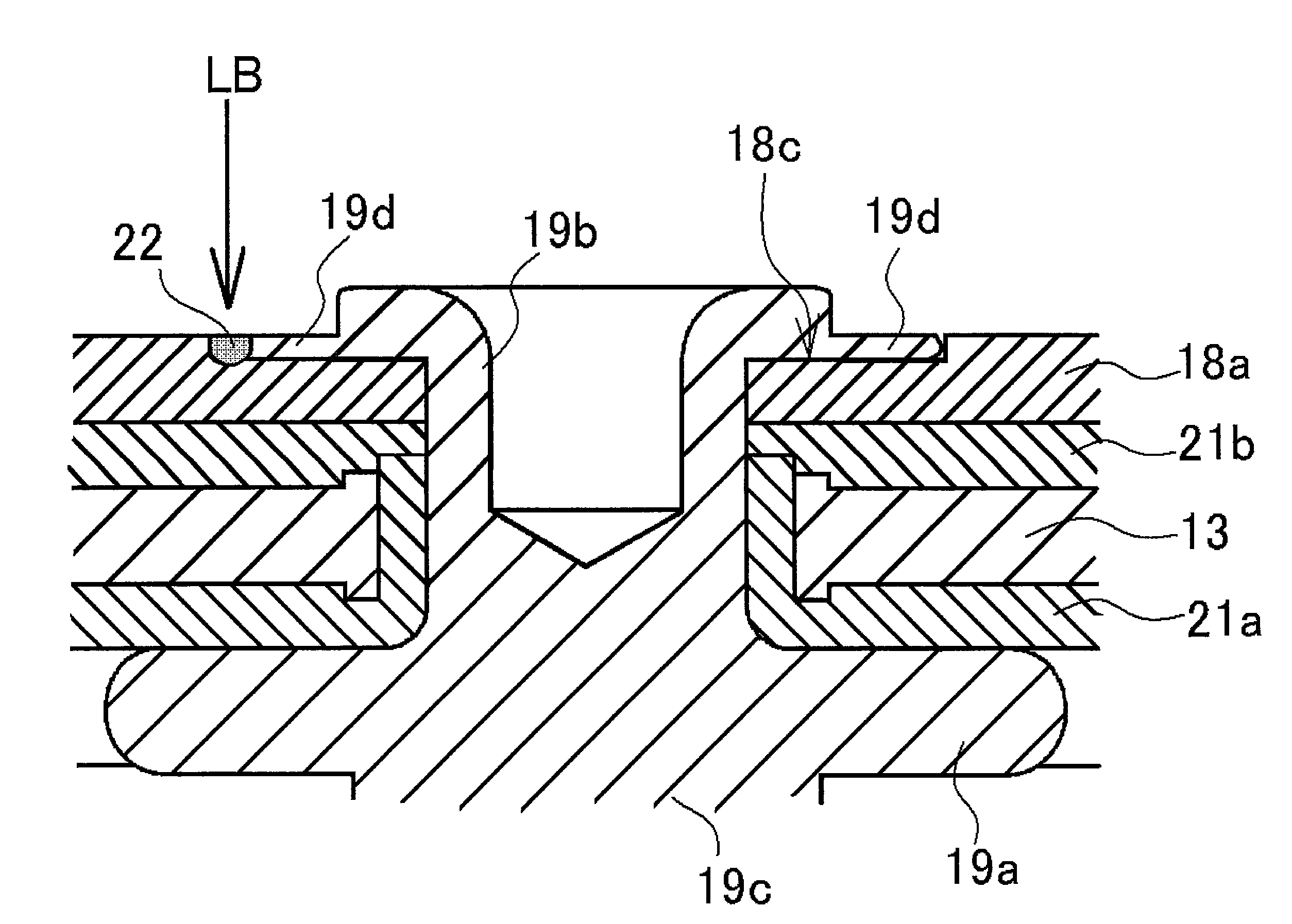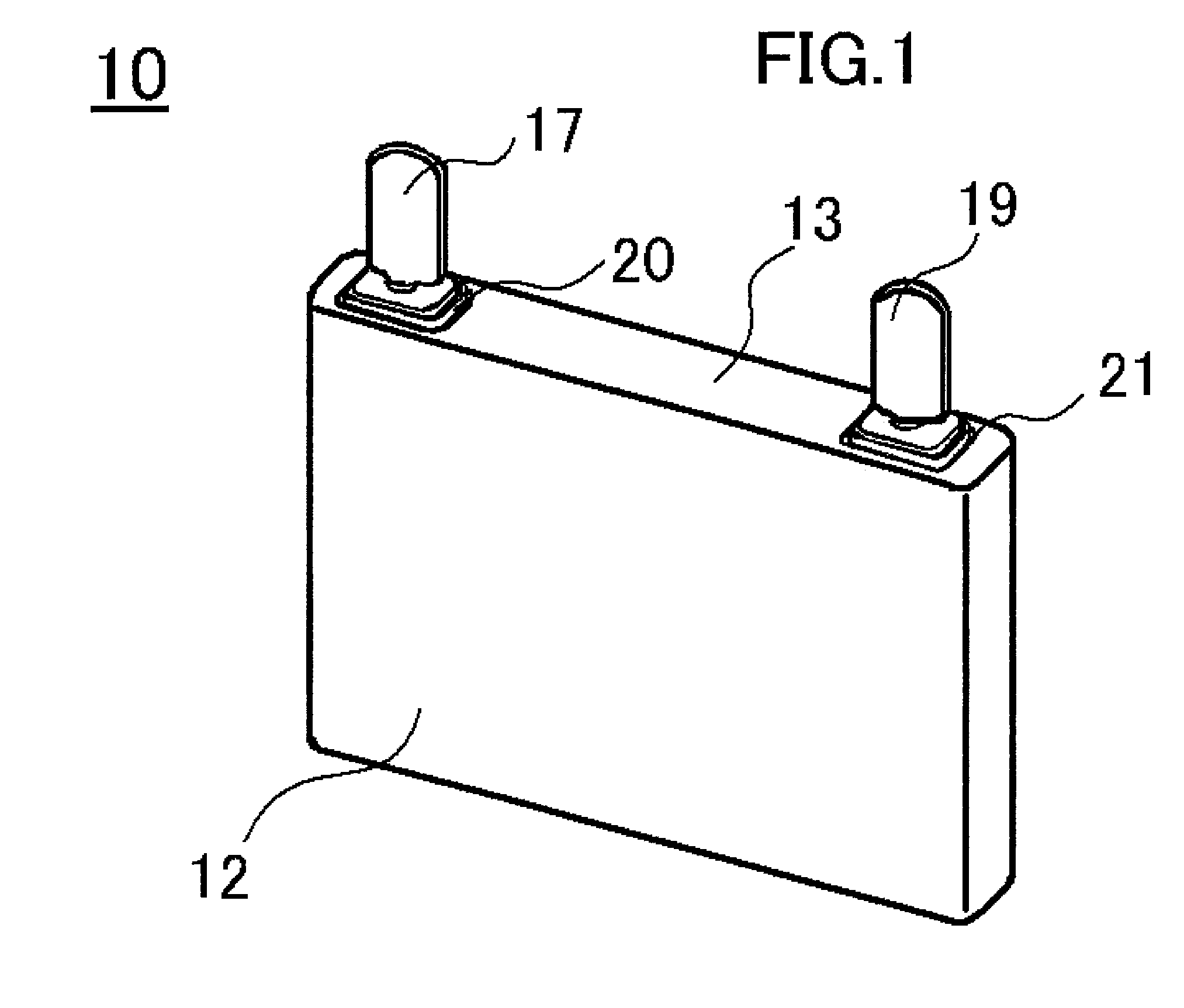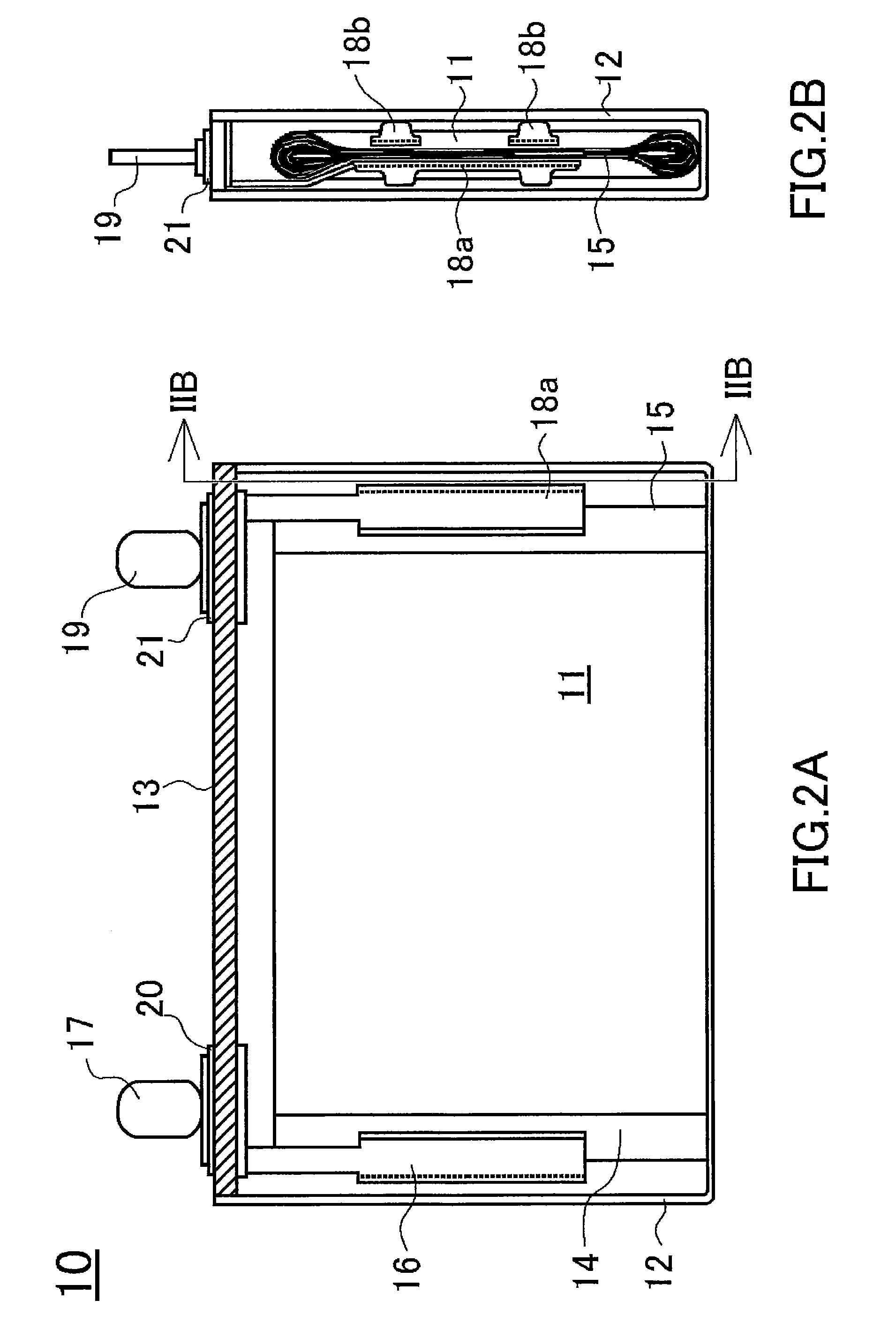Secondary battery
a secondary battery and battery technology, applied in the field of secondary batteries, can solve the problems of increasing the area to be laser welded, increasing the complexity of manufacturing devices, and presenting problems, and achieve the effects of reducing the effect, reducing the effect, and avoiding corrosion
- Summary
- Abstract
- Description
- Claims
- Application Information
AI Technical Summary
Benefits of technology
Problems solved by technology
Method used
Image
Examples
first embodiment
[0051]The structure of a negative electrode terminal 19A of a first embodiment of the invention will be explained with reference to FIG. 5A. Regarding the negative electrode terminal 19A of the first embodiment, a forming punch partially formed with an annular projection is used when partially forming the thin-walled portion 19d having a thickness smaller than those of other portions of the crimping member 19b at the tip end side of the crimping member 19b. The countersunk hole 18c formed in the negative electrode collector 18a has a circular or elliptical shape in plan view. In the negative electrode terminal 19A of the first embodiment, the countersunk hole 18c having an elliptical shape in a plan view is used, as shown in FIG. 5A. By using the forming punch partially formed with an annular projection, when a straight line is drawn from the center of the negative electrode terminal 19A towards the thin-walled portion 19d, the distance from the center of the negative electrode term...
second embodiment
[0053]The structure of a negative electrode terminal 19B of a second embodiment of the invention will be explained with reference to FIG. 5B. Regarding the negative electrode terminal 19B of the second embodiment, a forming punch circularly shaped partially on the outer circumference side and linearly shaped on the center side of the negative electrode terminal 19B (not shown) is used when partially forming the thin-walled portion 19d having a thickness smaller than those of other portions of the crimping member 19b at the tip end side of the crimping member 19b. Even by using the punch of such a structure, laser welding can be performed so as to directly melt the surface of the thin-walled portion 19d of the end portion of the crimping member 19b and the surface of the negative electrode collector 18a, as shown in FIG. 5B. Note that, since the width of the gap between the edge of the countersunk hole 18c and the end portion of the thin-walled portion 19d of the crimping member 19b ...
PUM
| Property | Measurement | Unit |
|---|---|---|
| diameter | aaaaa | aaaaa |
| thickness | aaaaa | aaaaa |
| energy | aaaaa | aaaaa |
Abstract
Description
Claims
Application Information
 Login to View More
Login to View More - R&D
- Intellectual Property
- Life Sciences
- Materials
- Tech Scout
- Unparalleled Data Quality
- Higher Quality Content
- 60% Fewer Hallucinations
Browse by: Latest US Patents, China's latest patents, Technical Efficacy Thesaurus, Application Domain, Technology Topic, Popular Technical Reports.
© 2025 PatSnap. All rights reserved.Legal|Privacy policy|Modern Slavery Act Transparency Statement|Sitemap|About US| Contact US: help@patsnap.com



